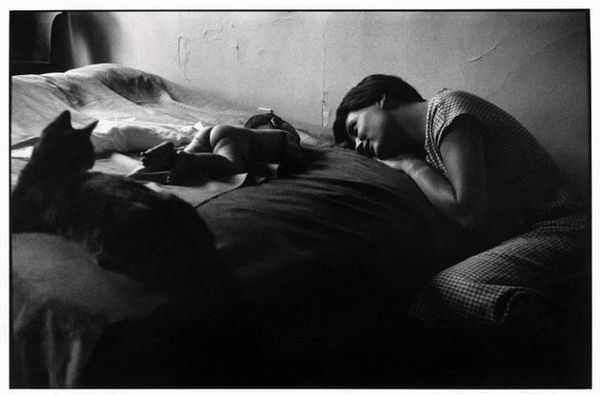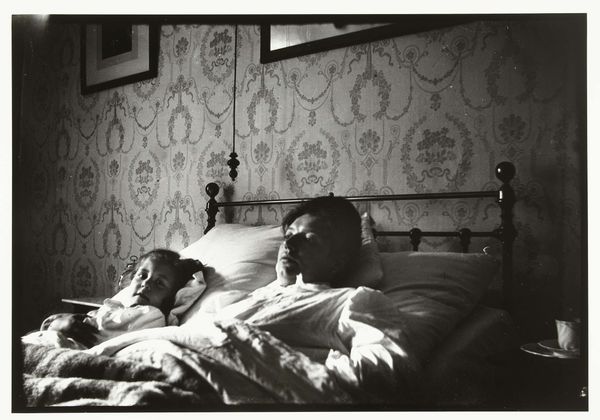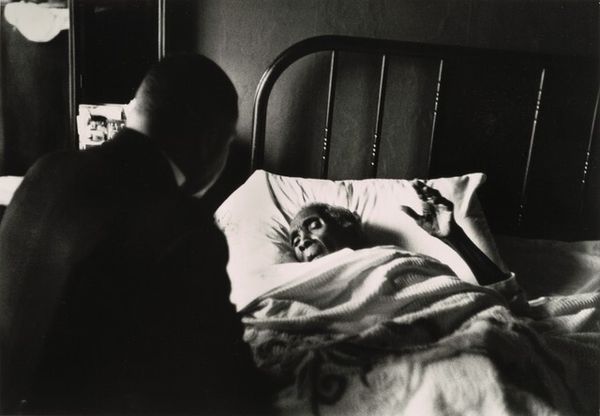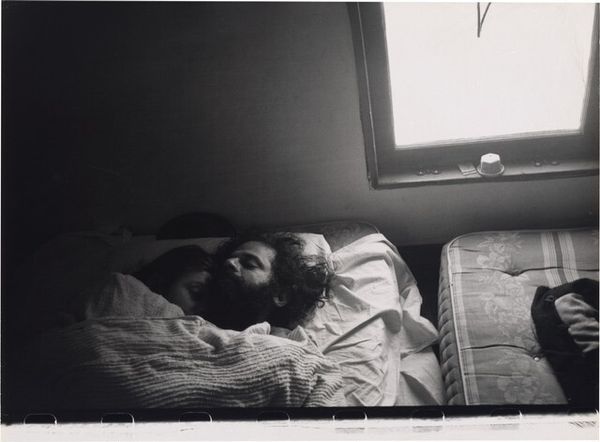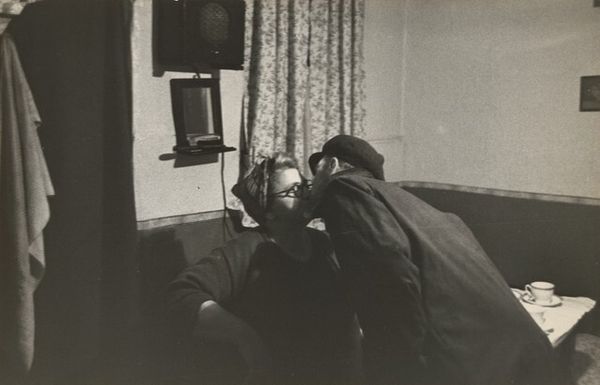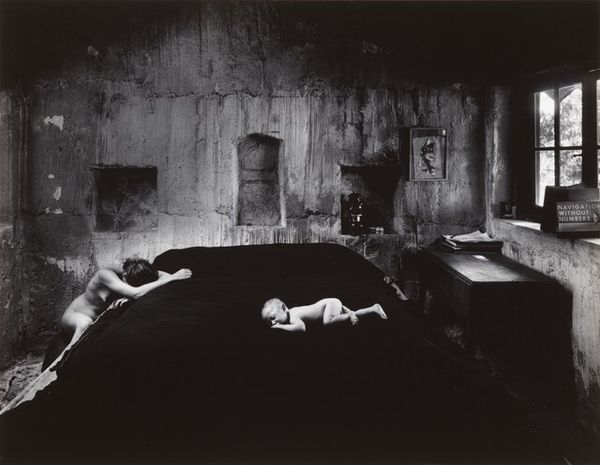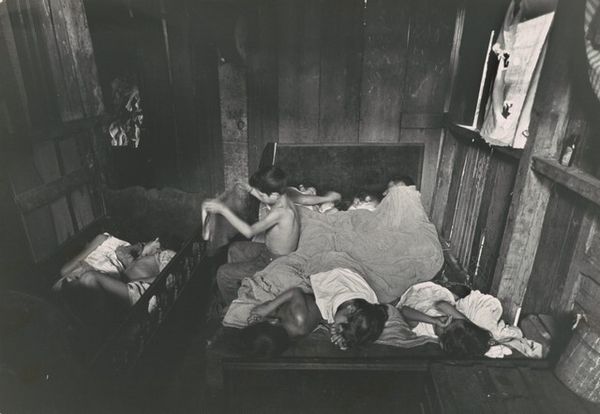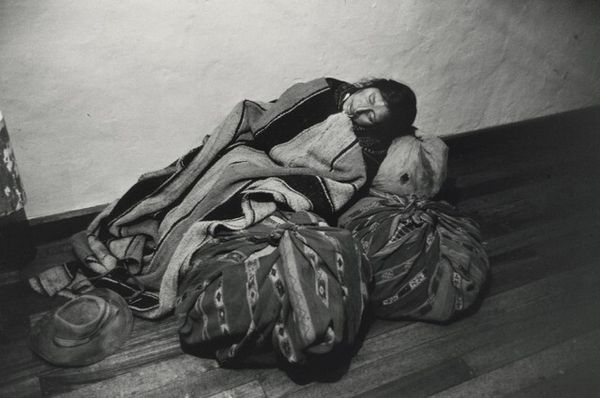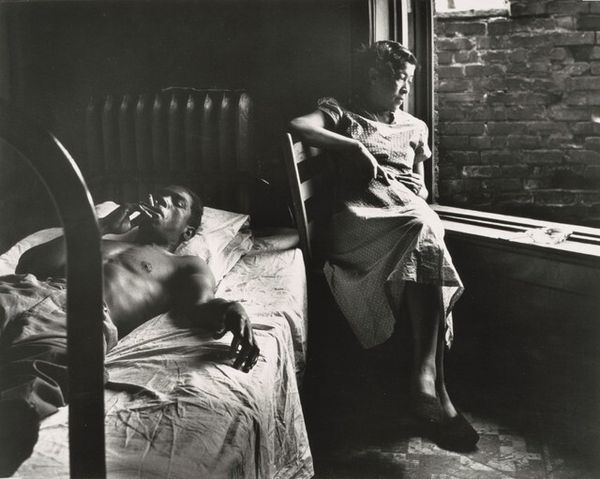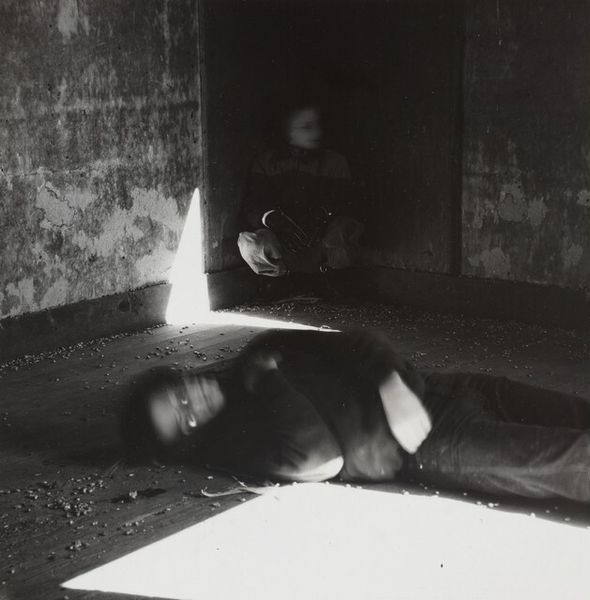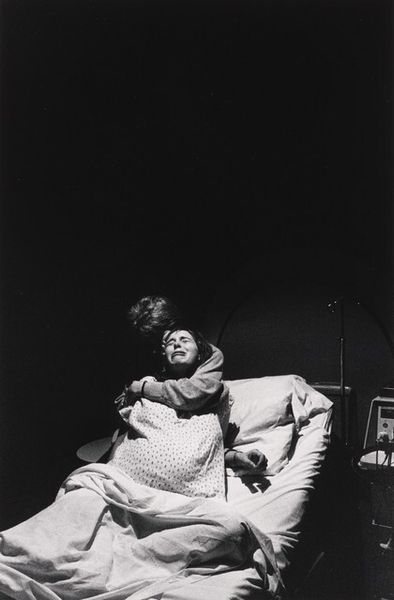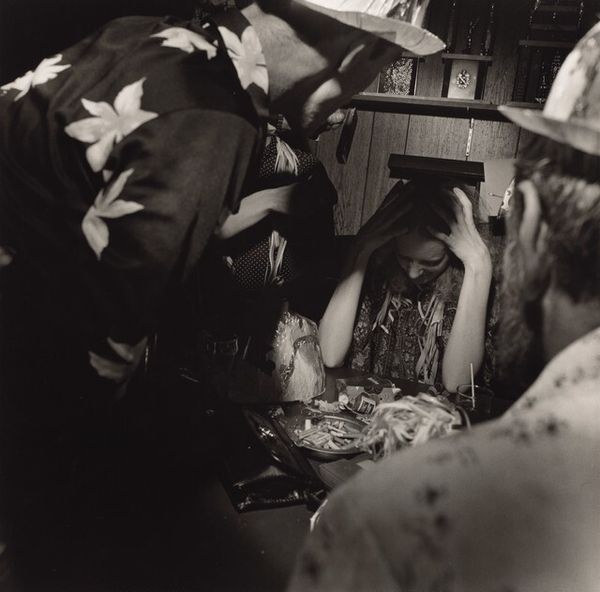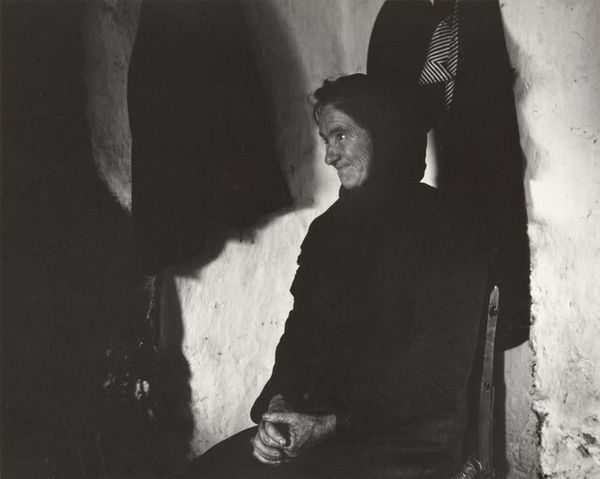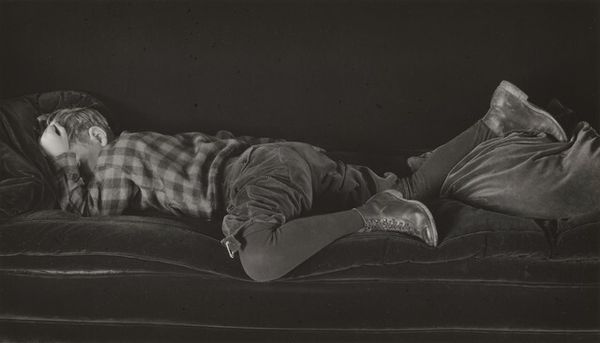
photography, gelatin-silver-print
#
narrative-art
#
black and white photography
#
social-realism
#
photography
#
black and white
#
gelatin-silver-print
#
monochrome
#
realism
#
monochrome
Dimensions: sheet: 41.1 × 50.5 cm (16 3/16 × 19 7/8 in.) image: 33.5 × 46.8 cm (13 3/16 × 18 7/16 in.)
Copyright: National Gallery of Art: CC0 1.0
Editor: We're looking at Gordon Parks's gelatin silver print, "Isabel Beside Sick Father," made sometime after 1961. It’s a black and white image, and the overwhelming mood is one of somber stillness. What strikes you most when you look at this piece? Curator: I’m struck by the composition—the sharp contrast between light and shadow immediately draws our attention to the stark realities of poverty and illness that Parks aimed to expose. The little girl, Isabel, is half-shrouded in darkness, symbolic perhaps of the uncertain future she faces. What do you make of her gaze? Editor: She seems to be looking somewhere beyond her father; maybe she's staring into an uncertain future like you mentioned. The image almost feels intrusive, like we are imposing on a very personal, difficult moment. Curator: Precisely. Parks was deeply invested in using his camera as a tool for social change. He consciously chose to document the struggles of marginalized communities, especially Black families, challenging the prevailing racial stereotypes of the time. This photograph invites a critical reflection on issues of healthcare access, racial inequality, and the systemic vulnerabilities of families living in poverty. Consider the time it was taken – the Civil Rights Movement was gaining momentum, but realities like the one depicted here were still commonplace. How does that inform your understanding? Editor: It's devastating to think this was happening while the fight for equality was supposedly progressing. The intimacy of the photograph is a jarring contrast to the grand scale of political movements. Curator: Exactly. Parks forces us to confront the personal costs of societal failures. It's not just a photograph of a sick father and his daughter; it’s a testament to resilience in the face of systemic oppression. Looking at the image now, decades later, do you think its message still resonates? Editor: Absolutely. Issues surrounding healthcare and racial inequality sadly remain urgent topics of conversation. The photo's ability to evoke empathy and understanding makes it as relevant today as it was then. Curator: Agreed. And Parks's artistic legacy serves as a potent reminder that art can – and should – be a catalyst for change.
Comments
No comments
Be the first to comment and join the conversation on the ultimate creative platform.
